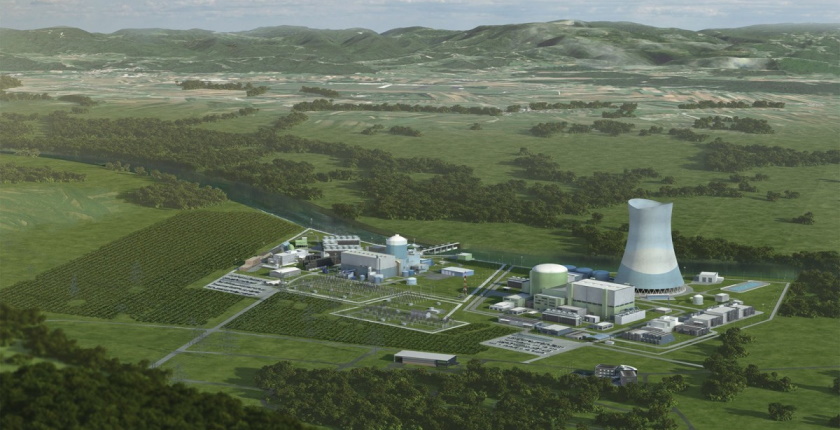
The project of the second unit of the nuclear power plant Krško (photo: GEN Energija)
State-owned power producer GEN Group said it would contribute to the decarbonization of Slovenia’s electricity generation with 10 terawatt-hours it plans to produce in new power plants such as the second unit in Krško nuclear power plant, hydropower plants, and solar power plants.
The GEN Group is responding to the challenges of decarbonization of the Slovenian electricity system with a low-carbon mixture of nuclear, hydro and solar energy, the company’s management said at a press conference.
The utility expressed confidence it is the solution for a stable, cost-competitive and low-carbon electricity system for Slovenia and the wider region.
GEN Group’s portfolio comprises nuclear power plant Krško, hydropower plants operated by Savske Elektrarne and Hidroelektrarne na Spodnji Savi (HESS), and gas power plant Termoelektrarna Brestanica (TEB), with an overall installed capacity of 1,320 MW. The company owns 50 percent of Krško and 35 percent of HESS and accounts for 3.6 TWh or 30 percent of Slovenia’s total production.
The vast majority of new production would be secured from the second unit of the Krško nuclear power plant
Martin Novšak, General Manager of GEN Energija, the umbrella company of GEN Group, said the company already produces 99 percent of its electricity from low-carbon sources. Investments in production facilities will provide an additional 10 TWh of electricity, of which the largest share will be provided by the second unit of the Krško nuclear power plant (JEK2 project), around 9 TWh, and the remaining 1 TWh by solar parks and hydropower plants, he underlined.
According to portal Naš stik, the rise in electricity generation would compensate for the loss of production in coal-fired power plant Termoelektrarna Šoštanj (TEŠ), and provide enough electricity for e-mobility, heating and cooling.
New electricity production will compensate for the loss of coal power plant TEŠ
Danijel Levičar, Business Director of GEN Energija, stressed the planned increase in production would enable a decrease in Slovenia’s import dependence. “The combination of renewable sources and nuclear energy enables us to successfully decarbonise the electricity system and move to a low-carbon society,” he added.
Of note, state-owned power utility HSE Group secures 70 percent of domestic production. It operates power plants with an installed capacity of 1.990 MW, including TEŠ, and generates 7,8 TWh annually.
Slovenia is still considering the deadline for ending the use of coal. The government has proposed 2033.
GEN Group recorded a profit of EUR 80 million last year.





















Be the first one to comment on this article.